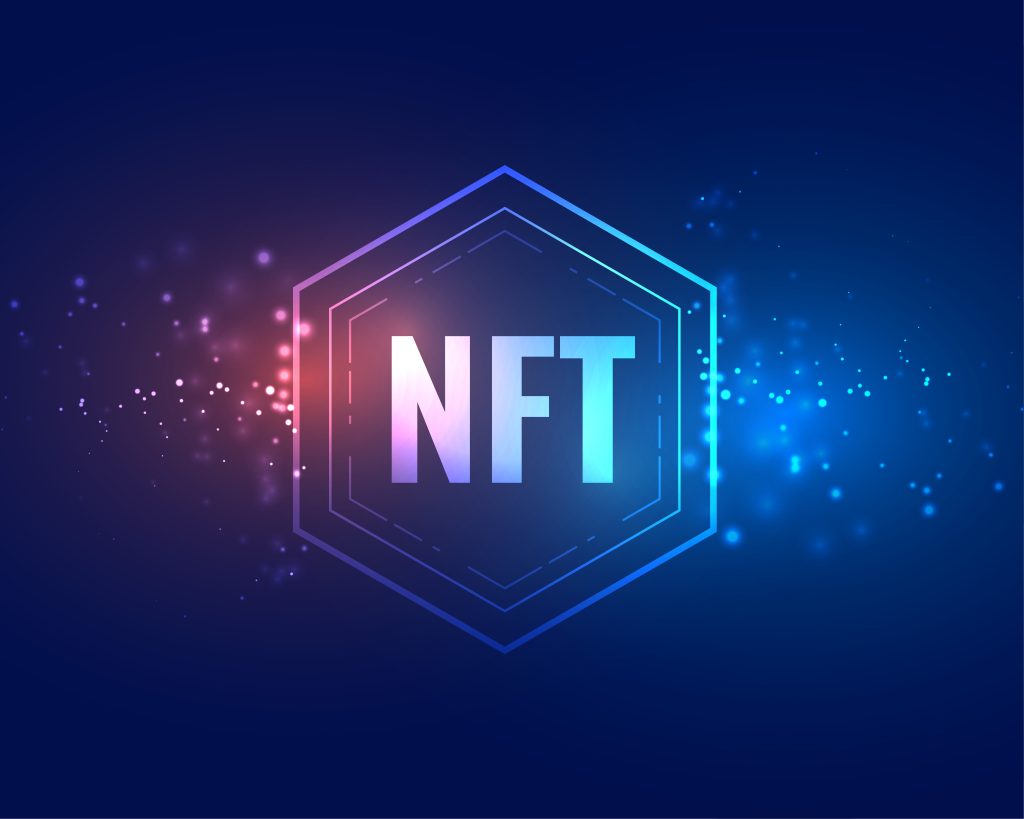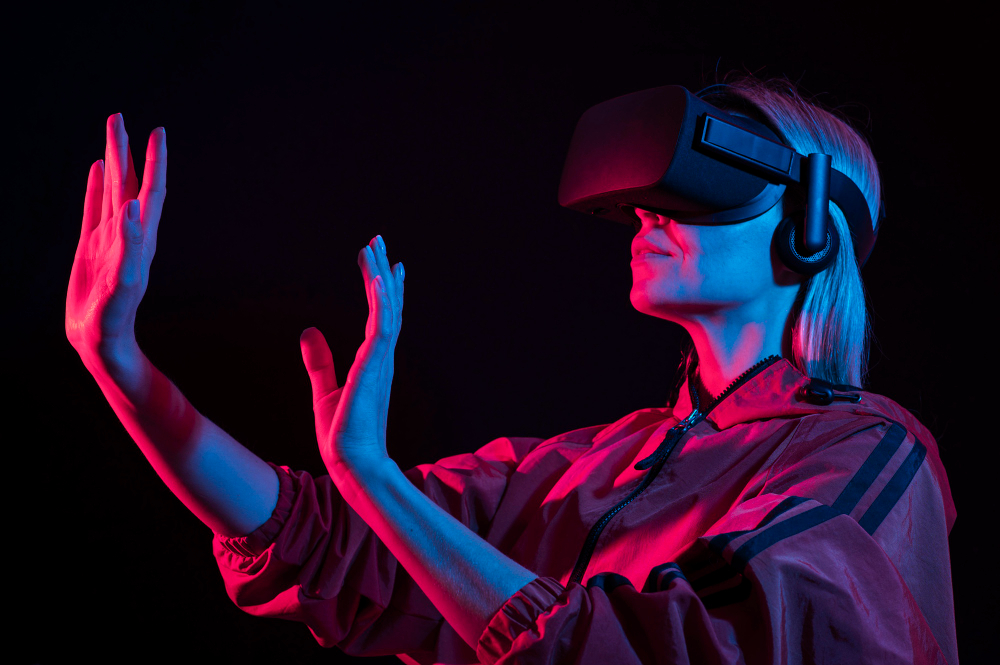The creation of recent digital assets is one of the most contentious issues in technology. As more business processes and systems migrate to digital ways, it is critical to consider new and innovative methods for producing digital assets. The possibility of establishing a brand-new world of decentralized solutions is the only distinction between non-fungible tokens and the metaverse.
Recently, NFTs have gained much popularity as a way to show digital assets on a blockchain. Although NFTs have a wide range of uses, one of the most popular ones is representing things in virtual worlds. Let’s look at the connections between these two terms and how they can cooperate.
Explaining NFTs
NFTs are cryptocurrency tokens built on the blockchain representing distinctive assets like original artwork, digital files, or other media types. An NFT may be thought of as being affixed to a physical item or a digital asset. It serves as an irreversible c ownership and authenticity certificate.
Cryptographic signatures on the blockchain used for NFT formation can swiftly and simply determine the asset’s past ownership and current owner.
An author creates a non-fungible token through the minting procedure. It involves confirming a blockchain transaction, including a token’s crucial data. The created token is assigned to its owner once the transaction is broadcasted to the blockchain via the smart contract function.
A non-fungible token’s unique token identity (token ID), held inside a smart contract, is converted to an owner identification. When the token ID wants to transfer to another user, the methods for confirming ownership and allocating the token to a new buyer are straightforward.
Non-fungible tokens can signify virtually any kind of value, whether material, digital or intangible. The most often utilized NFT assets are digital works of art, digital collectibles, media, and event tickets.
Explaining Metaverse
Users may fully dive into online buying and selling in the three-dimensional virtual world known as the metaverse. The metaverse aims to integrate our digital and physical selves seamlessly. It mixes virtual worlds and augmented reality.
The phrase “metaverse” was first introduced by Neal Stephenson in his book Snow Crash, released in 1992. He characterized it as a potential living environment for virtual reality. Although virtual reality has advanced throughout this, Facebook recently added to the term’s rising prominence.
Using NFTs in the Metaverse
NFTs provide various benefits over traditional asset ownership schemes in the metaverse. Below is a list of the most noteworthy.

Additional Protection
One of the key advantages of using NFTs is the capability of exchanging and storing virtual assets in the metaverse considerably more securely. There can be no theft or fraud as the blockchain records every transaction. The increase of traditional methods in holding and trading virtual assets, typically the subject of fraud and hacks, stands in stark contrast to this.
Creating Deficiency
The advantage of using NFT is that it encourages the emergence of scarcity. That is important for virtual worlds since it could influence how valuable items are perceived. NFTs may be used to represent other objects, such as digital art. Users may feel the virtual environment to be fascinating and authentic.
Gains from Resources
Last, NFTs provide a way to profit from resources uncovered in the metaverse. For developers and artists, access to funding is essential. NFTs can provide new revenue sources for businesses operating in virtual environments. This might lead to the metaverse.
Problems for the Metaverse and NFTs
When employing NFTs in the metaverse, several considerations must be made. How to depict asset ownership is one of the most crucial factors. This is crucial in virtual environments where proving ownership could be challenging. Another difficulty is finding a way to use NFTs to prevent inflation. It is vital to think about buying and selling NFTs.
For example, will transactions occur instantaneously between users or through a centralized exchange? Using non-fungible tokens in the metaverse requires consideration of all of these issues. They are manageable since several projects are presently working on solutions.
For anybody with an interest in opal gemstones, a flow-powered NFT marketplace that provides three different NFT varieties has just been developed. Building the so-called Opalverse, a specialized opal metaverse, and fostering positive interactions between subject matter experts and fans are the objectives of such a project. However, there is no disputing that such original concepts provide chances that have never been available.
Potential Metaverse Effects of NFT
NFTs will serve as the metaverse’s framework and are vital to its progress, say experts in the field of cryptocurrencies. But exactly how will NFTs change the metaverse?
Metaverse platforms frequently employ the play-to-earn (P2E) economic model, and interactive gaming is projected to play a significant part in the metaverse. The blockchain can handle peer-to-peer (P2P) gaming. Players receive awards and incentives based on their performance in the game and playing preferences. Users can earn money based on gaming habits, albeit the coin varies on the metaverse.
The exchange can convert cryptocurrency into fiat money, NFTs, etc. In contrast to most traditional video games, which manage assets for the player, this provides a friendly, open economy in which players retain complete control of their assets.
An open and just economy will grow as a result of guildsGuilds acting as facilitating intermediaries by investing in in-game NFT resources and renting them out to other players seeking to utilize them in their virtual environment. The play-to-earn guild then keeps a small percentage of the money made. A more egalitarian economy is facilitated by the players’ capability, lacking the economic means to participate in a game to utilize guilds to their benefit.
NFTs will support the communities, identities, and other social interactions in the metaverse. For example, holding a certain NFT might demonstrate support for a particular cause. Additionally, it could convey their perspective on the real or virtual world.
Use avatars to create their online persona and get access to restricted activities. Then, groups of people with related interests may emerge to exchange experiences and produce material. For instance, NFT avatars might be seen as an extension of the player’s persona.
Conclusion
NFTs have a lot to offer in the metaverse. They provide a way to create scarcity, show asset ownership, and make money from content. There are now many efforts working on metaverse software development that have solutions, but there are still specific problems to consider, such as how to represent ownership and stop inflation. If these issues can be resolved, NFTs will play a significant role in the future growth of virtual worlds.
































































